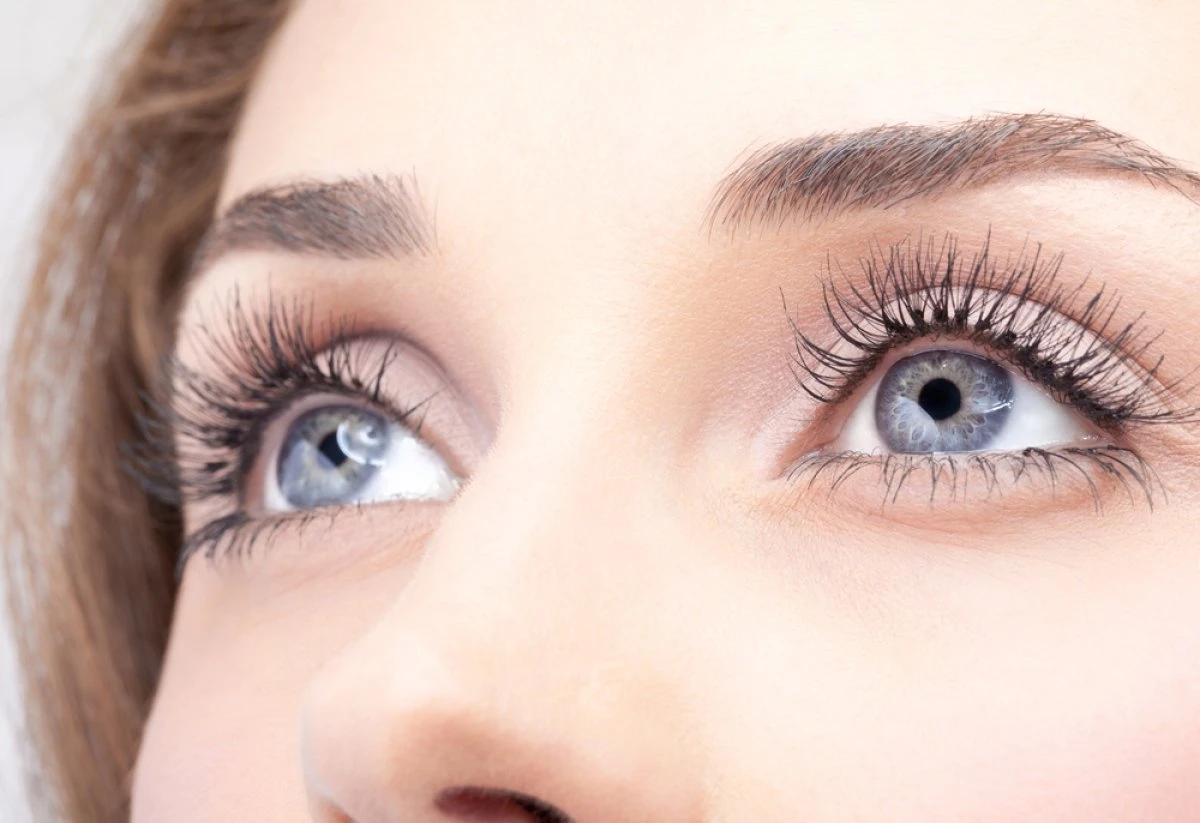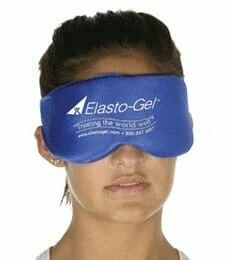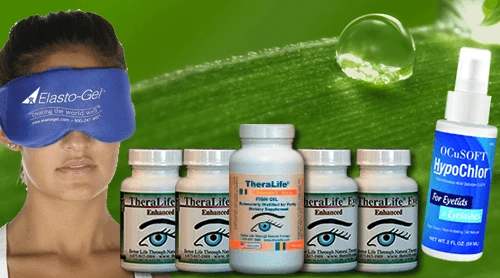Introduction- Warm Compresses For Dry Eyes.
In conclusion, the strategic application of warmth as an adjunctive measure in chalazion treatment may hold parallels in the more complex management of uveitis, where scientific studies and clinical cases have demonstrated the benefits of various treatment modalities.
As with the application of warm compresses for chalazion, the consistent and evidence-based use of these advanced treatments in uveitis can lead to significant symptom relief and recovery, emphasizing the vital role of targeted therapeutic interventions in ocular conditions.
Microwavable Gel Packs
Commonly utilized for their convenience and consistent heat delivery, microwavable gel packs are an effective option for chalazion treatment. Providing localized heat therapy, these packs help in reducing the viscosity of glandular secretions, facilitating drainage, and promoting healing.
When employing microwavable gel warm compresses, microwave safety is paramount. Users must adhere to manufacturer instructions to prevent overheating, which could lead to burns or pack rupture. It is clinically advised to heat the pack incrementally, checking the temperature frequently to ensure it is warm to the touch, not hot.
Gel pack maintenance is also crucial for both safety and longevity of the product. Packs should be regularly inspected for signs of wear and tear, such as leaks or a compromised seal, which could pose a risk of skin irritation or infection if contents come into contact with the skin. In addition, cleanliness is essential; gel packs should be wiped down with a mild disinfectant after each use to maintain hygiene, particularly when used near sensitive areas like the eyes.
Proper care and adherence to guidelines not only extend the life of the product but also safeguard the user’s health.
DIY Warm Cloth Compress
Switching gears to a more traditional approach, a DIY warm compresses provides a simple yet effective method to alleviate the discomfort associated with chalazions. This method involves using a clean cloth, ideally one that is soft and made of a material that retains heat well, such as flannel or cotton. The cloth is then soaked in warm water, wrung out, and applied to the affected area, providing direct warmth and promoting circulation which can help in reducing the swelling and hasten the healing process.
| Step | Detail | Importance |
|---|---|---|
| 1. Selection of Cloth | Choose a soft, heat-retentive cloth type like cotton or flannel. | Ensures efficient heat transfer and comfort. |
| 2. Heating Method | Soak in warm water (not boiling) for a few minutes. | Provides consistent warmth without risk of burns. |
| 3. Application | Apply to the eyelid for 5-10 minutes, reheat as needed. | Promotes circulation and softens the chalazion. |
| 4. Cleaning | After use, wash the cloth with soap and hot water. | Prevents bacterial growth and maintains hygiene. |
Adhering to proper cleaning methods for the cloth is crucial to prevent any infection. After each use, the cloth should be thoroughly cleaned with hot water and soap, and dried completely before subsequent use. Moving forward, another traditional and natural method to discuss is the ‘warm tea bag technique’ for chalazion treatment.
Warm Compresses – Tea Bag Technique
The warm tea bag technique utilizes the natural heat and anti-inflammatory properties of tea to provide relief from chalazions. Tea antioxidants, particularly those found in green and black tea, such as catechins and flavonoids, have been recognized for their ability to reduce inflammation and promote healing. When applied warm compresses, the tea bag serves not only as a heat source but also as a medium to deliver these beneficial compounds directly to the affected eyelid area.
Here’s how to properly use the warm compresses – tea bag technique for chalazion treatment:
- Steep a tea bag in hot water for about 1 to 2 minutes, allowing it to release the tea antioxidants.
- Remove the tea bag from the water and let it cool down just enough to ensure it is warm but not too hot to avoid burning the delicate skin around the eye.
- Check the bag material to ensure its integrity so that no tea leaves escape and irritate the eye.
- Apply the tea bag to the affected eyelid for 5-10 minutes, using gentle pressure to aid in the drainage of the chalazion.
This method is appreciated for its simplicity and the additional therapeutic benefits that tea antioxidants provide, making it a widely recommended home remedy by healthcare professionals.
Commercial Heat Warm Compresses- Masks
Adjustable Temperature Settings- For Warm Compresses
Embrace the convenience of commercial heat masks with adjustable temperature settings, which offer precise control for optimal chalazion treatment. These devices are designed with both temperature consistency and safety features, ensuring that patients can safely apply the necessary warmth to the affected area without risking burns or other discomfort.
Consider the following when selecting a heat mask:
- Precise Temperature Regulation: Choose a mask that maintains a consistent temperature to deliver therapeutic heat effectively.
- Multiple Heat Settings: Look for masks that provide a range of temperatures to accommodate your comfort level and medical needs.
- Built-in Safety Mechanisms: Ensure the mask has automatic shut-off and overheat protection.
- Quality Materials: Select a mask made from durable, skin-friendly fabrics to ensure longevity and hygiene.
Reusable Vs Single-Use Warm Compresses
Heat masks for chalazion treatment come in both reusable and single-use varieties of warm comrpesses, each with distinct advantages and considerations for users seeking effective symptom relief.
Reusable heat masks, typically made of durable compress materials such as silicon or gel, offer long-term cost effectiveness as they can be used multiple times. They require proper cleaning and maintenance to ensure hygiene and sustained performance.
On the contrary, single-use heat masks, often made of non-woven fabrics impregnated with heat-generating chemicals, provide convenience and reduce the risk of contamination but may represent a higher cumulative cost and more waste over time.
When selecting between reusable and single-use warm compresses, individuals should consider factors such as frequency of use, budget constraints, and environmental impact.
Therapeutic Seed Cushions- Warm Compresses
One effective option for chalazion treatment is the use of therapeutic seed cushions, which provide a natural and gentle heat that can help reduce swelling and discomfort. These cushions are typically filled with materials like flax seeds, wheat, or other grains that can retain heat when warmed. The sustained release of this heat aids in increasing circulation to the affected eyelid, promoting healing and the liquefaction of the glandular secretions that contribute to chalazion formation.
Here are some clinically relevant points to consider when using seed cushions:
- Seed Longevity: The seeds within the cushions have a finite life span and will eventually need replacement as their ability to retain heat diminishes over time.
- Cushion Care: Proper maintenance of the cushion is crucial. It should be stored in a dry place and kept clean to prevent microbial growth.
- Heating Method: Follow the manufacturer’s instructions for heating the cushion to avoid overheating, which could lead to skin burns or damage to the cushion.
- Application Protocol: Use the heated cushion on the affected area for about 10 minutes, several times a day, ensuring to check the temperature before application to avoid burns.
These guidelines can help ensure that therapeutic seed cushions are used safely and effectively for chalazion management.
Heated Eye Pads- Warm Compresses
Transitioning from the natural warmth of therapeutic seed cushions, patients seeking chalazion relief may also consider the convenience of heated eye pads, which are specifically designed to deliver consistent heat directly to the affected eyelid. Heated eye pads are engineered with eye safety as a paramount feature, often incorporating a regulated heating mechanism that maintains a safe temperature range to stimulate circulation without risking burns or discomfort.
Furthermore, these pads typically come with manufacturer guidelines regarding proper cleaning methods to ensure hygiene and prevent infection. It’s essential that users follow these instructions to maintain the effectiveness and longevity of the product.
| Feature | Benefit |
|---|---|
| Regulated Heat | Reduces risk of burns and eye discomfort |
| Timer Function | Prevents overheating and ensures safety |
| Soft Fabric | Enhances comfort during application |
| Reusable Design | Cost-effective and eco-friendly |
| Easy-to-Clean | Promotes hygiene and device longevity |
Clinical evidence suggests that the application of consistent, gentle heat can aid in the resolution of chalazia by softening the gland’s secretions and promoting drainage. As patients explore their options, it’s crucial to evaluate the product specifications and consult with eye care professionals.
Transitioning to an alternative remedy, the next section will explore the benefits and application methods of a warm salt compress, another viable option for those suffering from chalazia.
Warm Salt Compress
The implementation of targeted therapies for uveitis has been substantiated through various scientific studies and case reports, indicating an advancement in the management of this complex ocular condition.
Salt Type Choices For Warm Compresses
Selecting the appropriate type of salt is crucial when preparing a warm salt compress for chalazion treatment. The salt’s purity and mineral content can influence the compress’s effectiveness and the healing process. When choosing salt for a warm compress, consider the following:
- Table Salt: Commonly available, but often contains additives like iodine and anti-caking agents; purity may vary.
- Sea Salt: Typically has a higher mineral content, which might offer additional therapeutic benefits, though scientific evidence is limited.
- Epsom Salt (Magnesium Sulfate): Known for its high magnesium content, which may reduce swelling and inflammation.
- Himalayan Pink Salt: Believed to have a rich mineral profile, but its benefits over other salts for chalazion treatment are not well-documented.
Select a salt that aligns with your preference for natural ingredients and consider any potential skin sensitivities.
Application Duration Tips For Warm Compresses
Considering the type of salt chosen for your chalazion treatment, understanding the optimal application duration for a warm salt compress is essential for effective relief. Clinical guidelines suggest that warm compresses should be applied for 10 to 15 minutes, 3 to 4 times daily, to reduce inflammation and promote drainage from the chalazion. This regimen maximizes the therapeutic benefits while minimizing skin irritation. Adherence to compress frequency is crucial for sustained results.
Safety precautions include monitoring skin response to prevent burns and discontinuing use if excessive discomfort or an allergic reaction occurs. Patients should also ensure that the salt does not directly contact the eye to avoid irritation.
As we consider the maintenance of heat application, let’s transition to the convenience offered by ‘reusable warm beads’ for ongoing chalazion management.
Reusable Warm Beads- Warm Compresses
One effective method to alleviate the discomfort of chalazions is the application of reusable warm beads, designed to retain heat and conform to the shape of the eyelid. These compresses offer a practical and consistent source of heat, which is essential for promoting circulation and assisting in the resolution of the blockage causing the chalazion.
When considering reusable warm beads for chalazion treatment, it is important to keep in mind:
- Material Safety: Ensure that the beads are made from non-toxic materials and are encased in a durable, skin-safe fabric.
- Consistent Heat: Check that the beads are capable of delivering a consistent temperature, which is vital for effective treatment without risking burns.
- Cleaning Methods: The product should come with clear instructions for cleaning to maintain hygiene and prevent infections.
- Ease of Use: Look for a design that can be easily heated in a microwave and applied without assistance.
Clinical studies have suggested that consistent application of warmth to a chalazion can significantly aid in its resolution. Therefore, choosing a compress that meets these criteria is paramount for both safety and effectiveness.
As we explore the various options for treating chalazions, let us transition into the next section, which will delve into the soothing properties of infused herbal compresses.
Infused Herbal Compresses- Warm Compresses
Herbal Selection For Warm Compresses
Within the realm of natural remedies, herbal-infused warm compresses have proven to be effective for the alleviation of chalazion symptoms. The natural efficacy of such treatments is often attributed to the anti-inflammatory and soothing properties of specific herbs. When selecting herbs for a compress, consider the following:
- Chamomile: Renowned for its calming effects, chamomile can help reduce inflammation and soothe irritated skin.
- Calendula: Possesses natural antiseptic properties and promotes healing.
- Green Tea: Contains anti-inflammatory polyphenols and antioxidants.
- Lavender: Noted for its antimicrobial benefits and ability to relieve swelling.
These soothing herbs can be steeped in warm water to create an infusion for a compress, offering a gentle and natural approach to chalazion management.
Next, we will explore the preparation techniques to maximize the therapeutic potential of these herbal compresses.
Preparation Techniques For Warm Compresses
Typically, the preparation of infused herbal compresses involves steeping selected herbs in hot water to extract their therapeutic properties for effective chalazion treatment. The process should be undertaken with clinical precision. Optimal extraction is achieved by maintaining the water at a consistent temperature conducive to releasing the active constituents of the herbs.
Compress materials must be sterile and chosen for their ability to retain heat and permit the infusion of herbal essences. Natural fibers such as cotton or linen are preferred due to their breathability and soft texture, which is gentle on the sensitive eyelid area.
Safety precautions are paramount; ensure the temperature of the compress is tested to prevent burns, and verify that patients do not have allergies to the herbs used. Each compress should be used once to avoid contamination and infection risks.
Application Benefits Of Warm Compresses
The application of infused herbal compresses offers multiple therapeutic benefits, including reduced inflammation and accelerated healing, for individuals suffering from chalazion.
When selecting compress materials and applying infused herbal compresses, consider the following:
- Enhanced anti-inflammatory properties: Certain herbs, like chamomile or calendula, can provide additional anti-inflammatory effects when used in a compress.
- Antimicrobial action: Herbs such as tea tree or turmeric are known for their antimicrobial properties, which may help prevent infection.
- Improved circulation: The warmth from the compress can increase blood flow to the area, promoting faster healing.
- Soothing effect: Herbal infusions can offer a calming sensation, which can reduce discomfort and swelling.
Always adhere to safety precautions, ensuring that the temperature is not too high to prevent skin burns and that the compress materials are free from contaminants.
Electric Heat Compress- Warm Compresses
Among various warm compress options for chalazion treatment, electric heat compresses offer a consistent and easily adjustable heat source that can significantly alleviate discomfort. The key advantage of an electric heat compress is its ability to maintain a stable temperature, which is crucial for the effectiveness of heat therapy in managing chalazions. Heat consistency ensures that the meibomian glands are sufficiently warmed to promote drainage and healing without causing thermal injury to the delicate skin of the eyelid.
When using electric heat compresses, safety precautions must be diligently observed. The device should have an auto-off feature to prevent overheating, and the temperature should be carefully regulated to avoid burns. Patients are advised to follow the manufacturer’s instructions and consult with healthcare professionals for proper usage.
To illustrate the importance of these factors, the following table provides a comparison:
| Feature | Importance for Chalazion Treatment |
|---|---|
| Heat Consistency | Ensures effective meibomian gland warming |
| Adjustable Temperature | Allows user to find optimal comfort level |
| Auto-Off Function | Prevents overheating and potential burns |
| Safety Precautions | Reduces risk of injury and ensures safe use |
This table underscores the clinical considerations to optimize the therapeutic benefits of electric heat compresses for patients with chalazions.
Frequently Asked Questions
Can Warm Compresses Help in Preventing the Recurrence of a Chalazion?
Are There Any Risks Associated With Using Warm Compresses Too Frequently or for Extended Periods?
There is no adverse consequences of using warm compresses for extended periods of time provided the temperature is not too hot.
How Can One Differentiate Between the Need for a Warm Compresses and When It’s Time to Seek Medical Intervention for a Chalazion?
If warm compresses do not make your chalazion better after one month, you should seek medical assistance from your eye doctors. Chalazion can also leave a scar tissue behind which may require minor surgery in the office.
Can the Use of Warm Compresses for Chalazion Relief Interfere With Other Eye Treatments or Medications?
While the application of warm compresses is generally a safe practice for managing chalazion, it is crucial to recognize the potential implications such therapies might have on the treatment of other ocular conditions, such as uveitis. In the context of uveitis, an inflammatory eye disease, various scientific applications and case studies have highlighted the benefits of specific treatments.
Is There an Optimal Duration and Temperature for the Effectiveness of Warm Compresses in Treating Chalazions?
The optimal approach for applying warm compresses to treat chalazions must be adjusted with a focus on uveitis treatments, which involves different therapeutic strategies. While a chalazion is a localized eyelid issue, uveitis is an inflammation of the uveal tract within the eye, necessitating a distinct treatment regimen.
Conclusion
In conclusion, the strategic application of warmth as an adjunctive measure in chalazion treatment may hold parallels in the more complex management of uveitis, where scientific studies and clinical cases have demonstrated the benefits of various treatment modalities.
As with the application of warm compresses for chalazion, the consistent and evidence-based use of these advanced treatments in uveitis can lead to significant symptom relief and recovery, emphasizing the vital role of targeted therapeutic interventions in ocular conditions.




